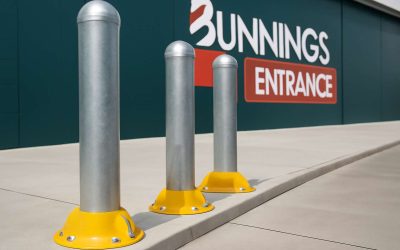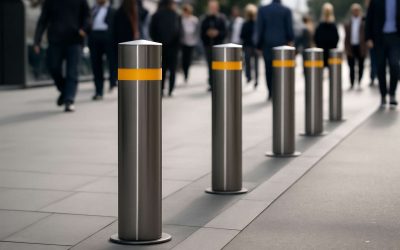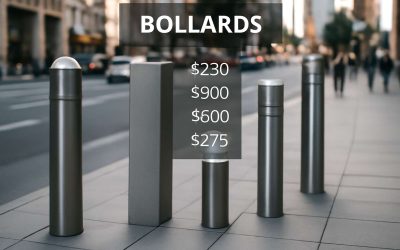
Bollards are a popular element in landscape architecture, parking lots, and other public areas. They are functional and aesthetically pleasing, preventing property damage, injuries, and theft. They also act as deterrents to traffic.
Types of bollards: Fixed, Removable and Decorative
The first thing you should consider when choosing your bollards is what you need them to do for you. If you’re a business owner, for example, you need to think about the safety of your customers and how that affects your bottom line. Likewise, if you’re a city planner, you need to consider street regulations, citizen safety, public events and community needs.
Whether you’re working for a government facility, a city, or a private business, you need to ensure that your bollards are crash-rated and meet the necessary safety standards. Crash-rated bollards are designed to stop vehicles that crash into them and are often a critical component of governmental facilities’ security plans.
If you’re looking for something more aesthetically pleasing, non-crash-rated bollards can be made of stainless steel or aluminum. They have a sleek, modern look and are typically coated with a silver-grey or powder-coated finish to match the surrounding aesthetic.
Traditional style bollards are made of cast iron or ductile iron, and are often used in more formal applications as standalone structures or covers over security pipe. They are sometimes accompanied by a decorative design, such as lighting options or other decorative features to further emphasize the serious look of the structure.
They can also be used as a visual deterrent, like a post that says “Behave.” A decorative bollard might even look like an actual child’s plaything in a school zone.
Flexible bollards are also common in parking lots and other public spaces where you want to protect people or buildings from damage. They bend on impact with little injury to the vehicle or bollard, then pop up again after the vehicle moves away.
This flexibility can allow you to avoid costly repairs after an accident. It also reduces the amount of energy that your vehicles “crushes” against the bollard, so there is less damage to cars and passengers in the event of a collision.
Retractable bollards are another popular type of bollard that can be lowered into the ground when needed and are a great solution for creating temporary security barriers for certain events or road closures. They are often hydraulic powered, and can be actuated by a push button or other automated system.
They can be installed in a variety of ways and can be removed at the end of their lifespan for easier storage. They are often used in mixed-use public areas to provide access during specific times of the year or when a road is closed.
Depending on what you’re looking to accomplish, your bollards will need to be constructed from different materials and will require various installation methods. For example, if you’re installing a bollard that’s meant to be installed permanently, you’ll need to make sure the concrete is of a high enough grade to withstand the weight of the vehicles that pass through it. Similarly, if you’re designing a bollard that can be removed for ease of access during special events or when it’s no longer required, you’ll need to decide how easy the installation will be.



0 Comments